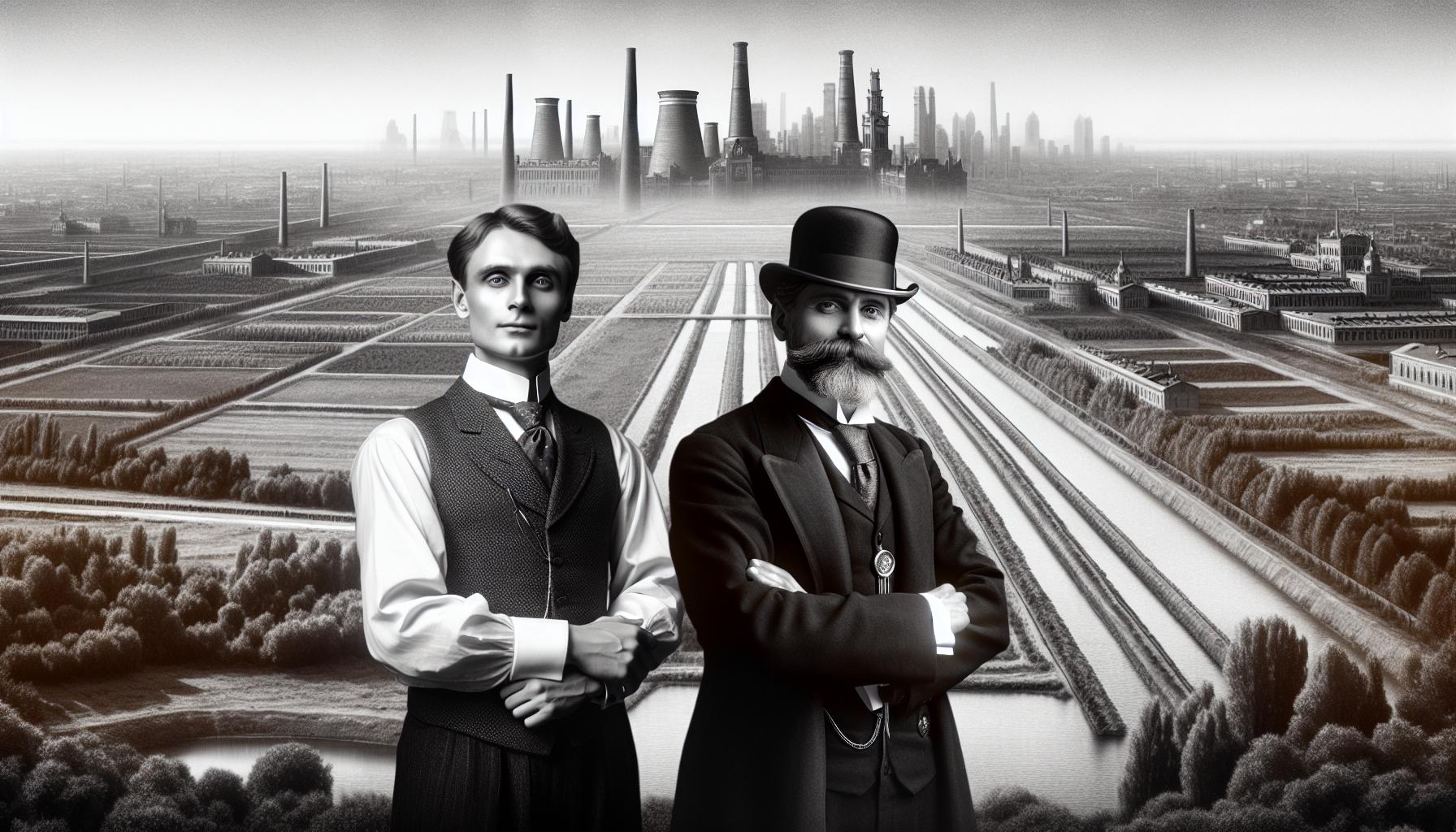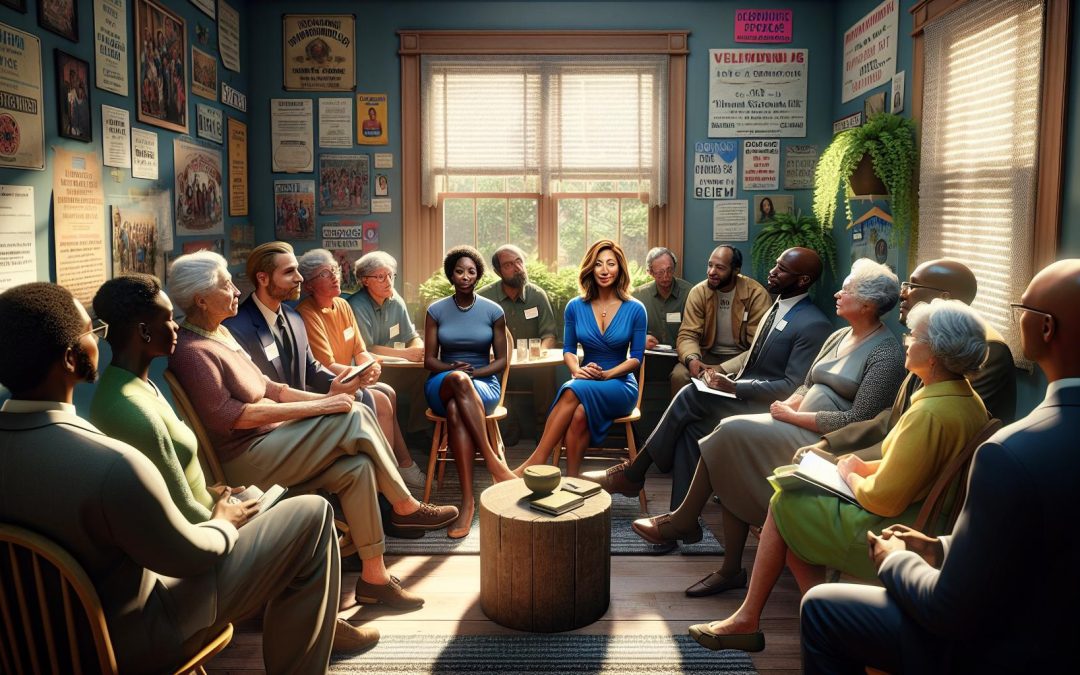As a resident of Kirkland, I’ve always been fascinated by the rich tapestry of history that’s woven into the very fabric of our town. It’s the remarkable individuals from our past that have shaped Kirkland into the vibrant and thriving community it is today.
In this article, we’ll shine a spotlight on some of these notable figures, those icons of the past who’ve left an indelible mark on Kirkland. From pioneers to philanthropists, artists to activists, their stories are as diverse as they are inspiring.
So, let’s embark on this journey together, revisiting the past and celebrating the personalities who’ve made Kirkland the unique place it is. Their legacies continue to resonate, reminding us of where we’ve come from and perhaps, pointing the way to where we’re headed.
Kirkland’s Notable Figures: Origins and Histories
Delving deeper, I’m taking you on a journey to meet Kirkland’s early settlers and industrial titans. Our exploration of these distinguished figures promises insightful glimpses of their lives and contributions.
Pioneers: The Early Settlers
In the early stages of Kirkland’s history, intrepid pioneers played instrumental roles. Among them, Peter Kirk and Leigh S. J. Hunt are standout figures, buying 8,000 acres of prime land in 1886 to set the foundation of Kirkland. Their ambitious plan entailed creating an iron and steel metropolis, a “Pittsburgh of the West”. While the economic circumstances at the time thwarted their dream, their efforts weren’t in vain. The infrastructure they established paved the way for future development.
Industrialists: Shapers of Kirkland’s Economy
Transitioning to the industrial legends, I introduce to you James A. Moore, a titan of his time and one of Kirkland’s foremost industrialists. Moore invested heavily in Kirkland around the turn of the 20th century, shaping its economy through endeavors like the Kirkland Land and Development Company. His ventures instigated development surges and played a key role in Kirkland’s incorporation as a city in 1905. Moreover, his influence stretched to the creation of civic institutions, therefore helping cultivate the Kirkland we recognize today.
The Contribution of Kirkland’s Icons to Community Development
In Kirkland’s history, there have been towering figures who, with their actions, efforts and ideas, stimulated the town’s transformation. Let’s delve deeper into their impacts by addressing two facets: how they shaped the social fabric and influenced local governance.
Shaping the Social Fabric
In the early 1900s, philanthropists and artists made notable impacts on Kirkland’s societal tapestry. Figures like Olive Frances Kirkland, for example, worked tirelessly in creating cultural establishments. Olive, the wife of founder Peter Kirk, founded the Kirkland Art Center that today, garners regional attention for its extensive programs and exhibitions. Similarly, philanthropists like Doris Cooper Houghton, with her significant contributions, played a pivotal role in building health institutions. Doris, heir to the Cooper’s mustard empire, donated generously to Kirkland’s healthcare system, resulting in the establishment of Evergreen Health Medical Center in the 1970s. These figures’ contributions laid foundations for Kirkland’s rich cultural and health infrastructure, making it a nurturing abode for current and future residents.
Influence on Local Governance
Kirkland’s governance has been shaped considerably by significant figures from the past, crucial among them Leigh S. J. Hunt and James A. Moore. Hunt, after purchasing large areas of land with Peter Kirk, assumed influential roles in the town’s civic matters. This included town planning and even communal decision-making. James A. Moore, a pivotal industrialist, also played a substantial role. His investments swayed the incorporation of Kirkland as a city in 1905, setting motion to legislative and institutional developments which still heavily influence city’s administration today. Furthermore, his funding established many civic institutions, key among them the City Hall and libraries, directly impacting Kirkland’s governance and public service infrastructure.
Significant Achievements of Kirkland’s Notable Figures
Let’s take a closer look at the remarkable feats achieved by these noteworthy figures. Their breakthroughs, innovations, and philanthropic efforts set them apart, forever leaving an indelible mark on Kirkland’s history.
Breakthroughs and Innovations
Examining the innovative feats, Peter Kirk and Leigh S. J. Hunt, despite economic adversities, effectively established foundations for industrial growth. Their land acquisition, an astonishing 8,000 acres in 1886, kickstarted Kirkland’s transformation. Moreover, James A. Moore’s strategic investments turbocharged the early 20th-century economy, facilitating Kirkland’s ascension to city status in 1905. Moore’s contributions didn’t stop there—he’d also laid the foundation for civic institutions, bearing lasting impact on how Kirkland’s citizens engaged with their city’s development.
From an artistic perspective, Olive Frances Kirk’s establishment of the Kirkland Art Center bolstered the town’s cultural infrastructure. Her endeavor promoted an appreciation for the arts, giving rise to a thriving artistic community. Also, Doris Cooper Houghton’s significant healthcare contributions underpin one of the town’s essential services, a testament to her innovative spirit.
Philanthropic Efforts
Not to be overlooked, the philanthropic accomplishments of these notable figures significantly shaped Kirkland. Artist and philanthropist, Olive Frances Kirk, didn’t just establish the Kirkland Art Center; she stimulated cultural growth by attracting diverse talent and inspiring creativity throughout the community. In the healthcare sector, Doris Cooper Houghton’s significant contributions improved facilities, thereby enhancing community wellbeing.
In terms of community development, Leigh S. J. Hunt’s town-planning initiatives and James A. Moore’s investments in civic institutions illustrate their profound commitment to Kirkland. Their efforts initiated crucial infrastructure—City Hall, libraries—that serves the community to this day. Collectively, these philanthropic endeavors have enhanced the quality of life in Kirkland, securing its status as a vibrant, well-rounded community.
Kirkland’s Female Icons: Their Impact and Legacy
Chronicling the feminine power and influence in Kirkland’s illustrious past, let’s delve into the lives of two sets of women who have shaped our community’s current reality. Their legacies, enshrined in social change, business, and governance lend proof to their enduring impact, reverberating even today.
Creating Social Change
The women of Kirkland were change-makers, truly. They’ve revolutionized societal norms, standing their ground against challenges, and demonstrating incredible resilience. Notable among them is Emily Yarrow, a staunch advocate for women’s rights. Yarrow’s tireless work ensured gender equity found roots in local governance, its imapct seen in equitable civic policies still in effect today.
Infusing passion into action, Julia Burgess, founded ‘Kirkland Women for Peace’, a group dedicated to propagating peace education and nurturing tolerance in our community. With membership crossing 1,000 individuals, this platform created in the 1980s, stands testament to Burgess’ persistent efforts.
Trailblazers in Business and Governance
Kirkland’s female pantheon also houses formidable business leaders and governance virtuosos. One of them, Erin Blakely, a real estate mogul, played a significant role in building the town’s skyline. Blakely’s empire, encompassing multiple commercial properties, reflects the result of her entrepreneurial savvy.
On the governance front, Megan O’Neill, Kirkland’s first female mayor in 1980, paved the roads of equitable governance. Her tenure witnessed the launch of key infrastructural projects and civic policies echoing her advocacy for social justice. Commemorating O’Neill’s influential tenure, the city named one of its parks in her honor.
Embroidering Kirkland’s narrative canvas, these women’s extraordinary lives and feats continue to enthral, inspire and guide us today. Their impact, monolithicly standing, inspires young girls and women, empowering them to seize their potential and transform our world.
Honouring Kirkland’s Icons: Monuments and Memorials
Let’s unpack the ways Kirkland salutes its icons through various landmarks. Let’s also delve into the annual events that celebrate Kirkland’s vibrant history.
Notable Landmarks
Kirkland takes pride in its past, and it’s apparent in its landmarks dedicated to notable figures. The most significant of these is the Peter Kirk Building. Constructed in 1890 and listed on the National Register of Historic Places, this building stands as a testament to Peter Kirk’s dream of an industrial metropolis. It has been restored, reemphasizing the importance of Kirkland’s industrial roots.
James A. Moore’s investment in the town didn’t just foster growth but also monuments, literally. The Moore Building, erected in 1890, initially served as a hotel but now houses local businesses, remaining a symbol of Moore’s instrumental role in Kirkland’s development.
There isn’t a physical monument commemorating Doris Cooper Houghton, but her impact on healthcare is monumental. EvergreenHealth Medical Center, one of Washington State’s premier healthcare facilities, carries on her legacy by providing excellent patient care.
On the cultural front, Olive Frances Kirk’s influence on the arts scene endures at the Kirkland Art Center. Lastly, tribute to Kirkland’s influential women can be seen at the Marina Park Pavilion. A plaque there honors Emily Yarrow, Julia Burgess, and other women who’ve left a lasting impact on the community.
Annual Celebrations and Events
Kirkland’s annual events reflect the contributions and legacies of its heroes. The Kirkland Heritage Society hosts an event in honor of Peter Kirk’s birthday annually. Participants can explore the places where Kirk and his contemporaries forged the town’s future.
The Moore Building also gets its due recognition during the ‘Moore Revival’ – a celebration involving town-wide festivities, recalling James Moore’s vision for Kirkland.
An equally vibrant celebration ensues each year at EvergreenHealth Medical Center to honor Doris Cooper Houghton. ‘Houghton Health Day’ emphasizes wellness and promotes good health practices, maintaining Houghton’s mission.
Lastly, the Kirkland Art Center hosts an annual festival, paying homage to Olive Frances Kirk’s role in nurturing the local art scene. This event brings artists together to showcase their work and foster greater appreciation for arts in the community.
Remembering these iconic statistics through landmarks and events doesn’t just keep their spirit alive, but also keeps Kirkland’s rich history etched in hearts and minds alike.
Conclusion
We’ve journeyed through Kirkland’s rich history, meeting the icons who’ve shaped it into the vibrant community it is today. We’ve seen how pioneers like Peter Kirk and Leigh S. J. Hunt laid the groundwork for the town’s development, despite economic challenges. We’ve admired the strategic investments of industrialist James A. Moore, which significantly shaped Kirkland’s economy and civic institutions.
We’ve celebrated the philanthropists and artists like Olive Frances Kirk and Doris Cooper Houghton, who enriched Kirkland’s cultural and health infrastructure. We’ve also acknowledged the powerful women, like Emily Yarrow and Julia Burgess, who’ve made significant strides in ensuring gender equity and promoting peace education in the community.
Finally, we’ve seen how these icons are honored through landmarks and annual events, keeping their spirit alive and their legacies etched in our collective memory. Kirkland’s past is indeed alive in its present, and it’s exciting to think of how these stories will inspire future generations.





0 Comments